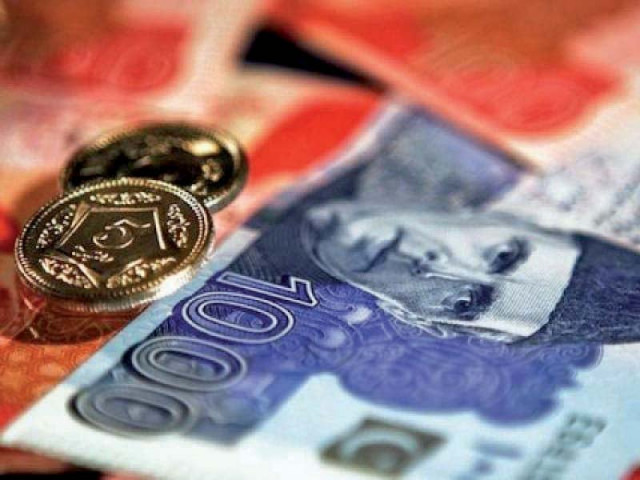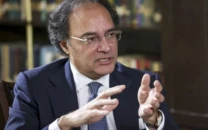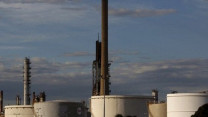Govt cuts profit rates on saving schemes
It will make it tough for govt to achieve investment target

The cut in the rate of profit has made the National Saving Schemes less attractive and has made it more difficult to raise the remaining 55% financing by the end of FY20. PHOTO: FILE
It was the second rate cut in six weeks after the State Bank of Pakistan (SBP) reduced the benchmark interest rate by 100 basis points about three weeks ago to 8%. The rate of profit on saving schemes is indirectly associated with the benchmark interest rate.
The government re-invests the public investment in three to 12-month treasury bills and multi-year Pakistan Investment Bonds (PIBs) and offers profit from the return it receives through the re-investment.
“The cut in the rate of profit is in line with the market expectation. The yields (rate of profit) on T-bills and PIBs have come down,” Arif Habib Limited Head of Research Tahir Abbas said while talking to The Express Tribune.
The Central Directorate of National Savings (CDNS) - which offers saving schemes to the public - reported that the rates of profit on Pensioner’s Benefit Account (PBA), Shuhada’s Family Welfare Account (SFWA) and Bahbood Savings Certificates (BSC) have been cut down by 48 basis points each to 9.84%.
Furthermore, the rate on Defence Savings Certificates (DSC) has been reduced by 49 basis points to stand at 8%; rate on Regular Income Certificates (RIC) cut by 84 basis points to 7.44%; rate on Special Savings Certificates dropped by 90 basis points to 7.10%, while the rate on Saving Bank Accounts (SA) reduced by 50 basis points to 6.50%, it said.
The rate cut came immediately into effect. The revised rates would be implemented on new investment, a majority of the schemes offer a fixed rate of return. However, the return on some of the schemes may drop on old investment; including Saving Bank Account, Abbas added.
Around seven million people have invested in one or the other saving scheme so far.
Investors may relocate
Abbas said the drop-in rate of return is a positive development for the perspective of the stock market. The investors, whose investments were affected due to a drop-in rate of profit, may relocate the capital from saving schemes to the Pakistan Stock Exchange (PSX).
PSX is offering an attractive rate of return since it had dropped massively in response to the coronavirus pandemic. These days, it is consolidating the recent gains.
Saving rate on the decline
The low rate of return on investment in such saving schemes has continued to discourage the general public to save a portion of their income. “Domestic saving in FY19 stood at 4.2% of the Gross Domestic Product (GDP) much lower than the level achieved in 2004 ie 15.6% of the GDP,” according to Economic Survey 2019. The share of public consumption in the GDP increased to 12.6% during the FY19 as compared to 11.7% in FY18. “One reason of high consumption pattern is less saving opportunities because consumers find no incentive to divert resources away from consumption towards saving,” it said.
On the other hand, the low investment in saving schemes by general public agree that the government would overcome the shortfall in budgeted annual expenditure through expensive commercial loans. The government utilises investment in saving schemes to bridge the budget deficit.
At present, the government is in high need for financing to support people and businesses to fight against the pandemic. Earlier, the government announced a relief package worth Rs1.2 billion ($8 billion) to counter the effect of the disease on general public and the economy.
Absolute saving
The government has set a target of raising Rs275.63 billion through national saving schemes in the current fiscal year ending June 30, 2020, according to the annual budget documents FY20. So far, it has raised a total of Rs160.39 billion in the first nine months (July-March) of the current fiscal year, according to the State Bank of Pakistan (SBP).
The raised funds in the nine months came around 58% of the targeted collection. The reduction in the rate of profit has made the national saving schemes less attractive and made it more difficult to raise the remaining 42% targeted financing in the remaining months of FY20.
Published in The Express Tribune, June 3rd, 2020.
Like Business on Facebook, follow @TribuneBiz on Twitter to stay informed and join in the conversation.



















COMMENTS
Comments are moderated and generally will be posted if they are on-topic and not abusive.
For more information, please see our Comments FAQ